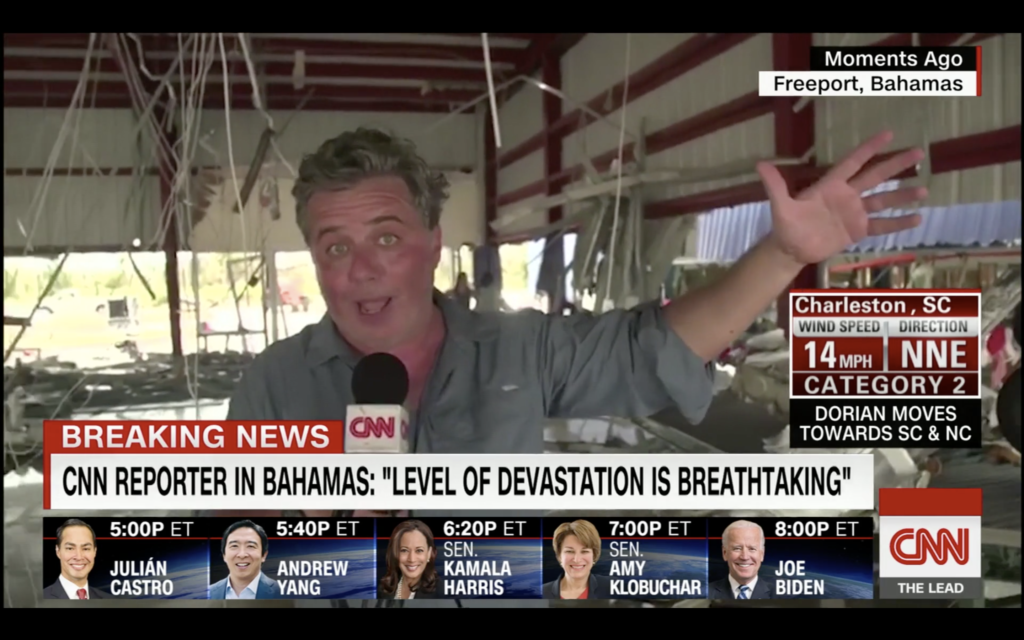Hurricane Emergency Watch
Register your contact details: ATCO’s, Airports, FBO’s, CAA’s, local aircraft operators.
- * Essential comms only *
- Share info on: airport status, runway open/closed, comms/equipment status, fuel availability.
- Aim: get information out early to relief aircraft operators and first responders, to allow relief to come.
If you want to know what's happening in Nassau, you ask someone in Nassau.
Right?
Aviation and technology have a strange relationship. While Boeing 787 pilots wow us with their Star-Trek-esque multifunction displays and flight deck, they also have to deal with trying to read critical flight information on a dot-matrix printout of NOTAMs (a 1920’s era teletype technology that the rest of the world has long ditched).
Similarly, in routine airport operations, technology serves us well. We can see the latest arrivals and departures online, get the latest met reports, and have any questions answered quickly with a phone call or email.
When a hurricane hits – that changes immediately and drastically. No NOTAMs, no weather reports, and nobody to ask – no working emails, no landlines. There is little to go on, if anything.
So, since we’re talking about Nassau, how do you get information on the airport in the hours and days after a hurricane? That’s a surprisingly difficult question to answer, and based on the evidence of Hurricane Dorian (2019), we definitely haven’t figured it out yet.
Why does it matter? Relief is critical, and aviation plays a big part. But before a single aircraft can get airborne, the operator needs to know some basic things:
– Is the airport open? Are roads open?
– What condition is the runway in? How about the ramp?
– Is there fuel available, and has it been checked for contamination?
– Is there an Air Traffic Control service?
– What cargo offload equipment is there?
Not knowing means not going.
So how do we fix this?
That’s the key question! The problem is simple: the normal lines of communication don’t work. We won’t see any Notams issued. Nobody is in the Tower. Nobody is in the Ops Office at the airport. People are at home, dealing with their own situation, and the aftermath.
But at some point, someone will go to the airport and make an initial assessment. It might be ATC, the Airport Company, an FBO … it doesn’t matter hugely. The key is: once someone knows, how do we get that information out?
So the idea is this:
Before the storm (and that’s the key), we set up some simple What’s App groups. Add in the ATC folk, Airport managers, FBO’s – connected to each other, but also to the Relief Air Wing team. While the hurricane passes, there will be no contact. But as soon as cell networks come back online, and people have data again to connect to 3G, we will have people to ask.
In this way, once we get the basics of the situation on the ground, we can get the word out – to the pilots, dispatchers, and people planning and operating Relief flights.. This is the same thing that we do in OPSGROUP every day, just with a specific focus: Relief flights after a disaster.
That’s the concept, and if you are an ATCO, Airport Ops person, FBO, CAA, or otherwise connected to aviation, register now and join the watch group.
Hurricane Emergency Watch
Register your contact details: ATCO’s, Airports, FBO’s, CAA’s, local aircraft operators.
- * Essential comms only *
- Share info on: airport status, runway open/closed, comms/equipment status, fuel availability.
- Aim: get information out early to relief aircraft operators and first responders, to allow relief to come.
The danger of bad information
There’s only one thing worse than no information, and that’s bad information.
On Wednesday, Sept 4th, 2019, two days after Dorian, the aviation community was waiting for information on the status of Freeport, Grand Bahama. The airport is critical to the island – it’s the only one capable of handling relief traffic.
Unfortunately, the first people to get news out were CNN. In a piece titled “Bahamas airport destroyed by Hurricane Dorian“, the reporter showed how the airport was “gone”.
For the news media, details don’t matter so much – their aim is to get eyes on the piece, and the more dramatic, the better. For aviation operations, details are critical. And so, relief efforts were delayed because the message from CNN was “The Airport is Gone”.
What CNN depicted as the “International Terminal”, was a hangar belonging to Western Aviation. The International Terminal was definitely damaged, but standing, and nothing like what was shown. The runways were in fact fine, and there was just some debris on the apron. There was even ATC.
The problem was just that nobody outside the Bahamas knew that.
Hurricane Emergency Watch
Register your contact details: ATCO’s, Airports, FBO’s, CAA’s, local aircraft operators.
- * Essential comms only *
- Share info on: airport status, runway open/closed, comms/equipment status, fuel availability.
- Aim: get information out early to relief aircraft operators and first responders, to allow relief to come.


